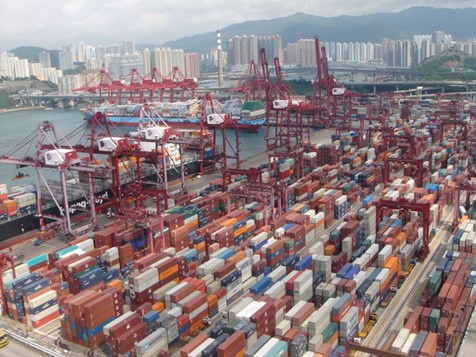Last November, a colleague introduced me to a group of Australian entrepreneurs going deep on how supply chains operate. I love the topic, and it seemed like a great opportunity to mentor small business leaders, so we started a conversation.
Granularity, Trustworthiness, and Protection
In March, we began an academic dialogue about two fundamental questions related to supply chains. First, we examined the granularity of supply chain data and its trustworthiness. Next, we discussed supply chain brand protection safeguards and enhancements. We talked about how to protect businesses by leveraging tools such as Value Stream Mapping (VSM), risk assessments, corrective action processes, and enabling technologies.
I understand what world-class looks like—with a history working in large, global supply chains—I didn’t necessarily know what that meant for others managing these subjects. As our talks evolved, it was an intriguing subject and we decided to study the second oldest industry in the world to see how they handle these issues.
A Deeper Look at Ocean
Early in our studies, I was introduced to a Finnish sea captain. We talked about the structure of the maritime industry, their challenges, and their openness to improvement. In other words, we explored the culture and how it operates.
Next, I talked to an old friend and senior leader at one of my forwarders. Now with a better understanding of his world, I was surprised by a quick pang of guilt over the hard-hitting negotiations we had through the years. I was naïve, thinking it was comparable to North American rail or trucking. Now I have learned that most things in this industry are masked; shippers never see what’s behind the curtain.
Along the way, I read over 20 papers on Admiralty law, mandates, regulations, Dalmatian statue law, Spanish Data Regs, a bit of maritime history, and the strategic plan for the International Maritime Organization (IMO). I gained an understanding that many of these practices find their origins in ancient Greece. I also grasped that progress in this industry does not come easy or quick—there are many layers to peel on this onion.
As a global supply chain leader, I had no understanding of the rules or my liabilities and exposure on the ocean. Over the next couple of weeks, we will explore the maritime industry to provide a better understanding of the real experience shipping goods over the ocean.

Why you should care about the Maritime industry?

We have used the ocean for trade since the beginning of time. This industry’s traditions were born thousands of years ago and as the history of the seas evolved, precedents became rules, rules that later became regulations. The industry structure is a maze that has evolved over a couple of thousand years. For instance, the concepts of General Averages find its origins in ancient Greece.
Shipping is an essential element of the global economy. How essential? The international maritime industry represents 90% of the world’s trade conveyance. In 2018, container traffic was estimated to be 60% of maritime activity or roughly USD 12T. These 792M Twenty-Foot Equivalents (TEU) were handled in ports worldwide.
Ships are a technically sophisticated, high-value asset, with the value of a container ship over US $200M to build. The operation of merchant ships generates an estimated $500B in freight rates annually. Between1980 and 2019, the deadweight tonnage of container ships grew from 11M to 266B metric tons. And, you have to follow the cash to understand what’s going on.
Old Industry, New Disruptions
A United Nations conference held in 1948 is the basis for the International Maritime Organization (IMO). Again, this is an old industry, with customs dating back millenniums—improvements don’t come quickly, easily, or without expense.
Case in point, on New Year’s Day 2020, the International Maritime Organization (IMO) revised the regulation on sulfur in fuel oil to be at most 0.5%, down from the 3.5% applied since 2012. So, in addition to challenges from COVID, these revised limitations set to disrupt this global business.
Increasing Cyber Security Threats
As some of us have traded over the seas, others set sail with different thoughts in mind. Cargo theft in the EU in 2019 was €26,455,200. Pirates still exist and they work effectively in certain areas of the globe. But today’s pirates are not necessarily the ones depicted in the movie Captain Phillips, off the Horn of Africa. Instead, these pirates attack their vulnerable prey, digitally.
In addition to revised sulfur regulations, the IMO sees Cybersecurity as an emerging issue. Guidelines for Maritime Cyber Risk Management have been issued, specifically for:
- Bridge Systems
- Cargo Handling and management systems
- Propulsion and machinery management and power control systems
- Access control systems
- Passenger servicing and management system
- Passenger facing public networks
- Administrative and crew welfare systems
- Communications systems
Later, we will discuss some very interesting and suspicious events with ships being capsized, fuel siphoned off in staggering proportions, and a poorly-firewalled control room compromised. This is scary stuff.
Back to Our Starting Questions
Reflecting on our original questions for the Maritime Industry:
- What is the granularity of data and its trustworthiness?
- What are the safeguards for brand protection within the supply chain?
In my past, we had used these tools including risk assessments and value stream mapping (VSM) while enabling the appropriate technologies to protect the business and the brand. We were always hardening our target, but what measures are taken in the maritime industry? Do they manage by these methods and what data do they have (and is it reliable)? Just how trustworthy is the maritime industry data? How granular can the industry be? These are the questions we will examine.
Next time, we’ll see if a hacker can make a ship capsize using its own systems.

